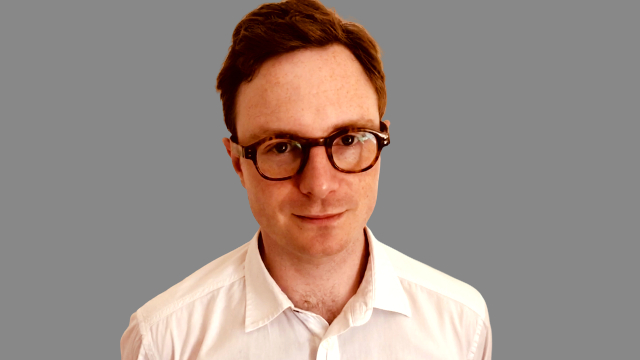Here is my interview with Hugo Philion who is the CoFounder and CEO of Flare Networks. In this interview we discuss the Flare Token airdrop distribution coming in January 2023. We touch on exchanges participating in FLR distribution, what Celsius users can do, SongBird and its future, FTX, and state of the crypto market.
Transcription
- Welcome back to “the Thinking Crypto” podcast. With me today is Hugo Philion, who’s the co-founder and CEO of Flare Networks. Hugo, it’s great to have you back on the show.
- Hey, how you doing? Thanks for having me.
- Yeah, Hugo, it’s exciting times. Of course, the Flare token distribution is fastly approaching, and folks wanted me to chat with you to talk about the plan and the next steps around that. Can you give us the latest updates around the distribution, and how that will be handled?
- Yep, absolutely, so, distribution will take place on January 9th, unless I’m hit by a bus or something, but even if I was, I think the team would get on with it, but let’s see. Hopefully, I won’t be. So, January 9th is the distribution date. It’s quite amazing. It’s been distributed by essentially every major exchange on the planet, including most of the Japanese exchanges, which isn’t something that has been done before, so, we’re extremely lucky as a community to have this level of support, and it shows the power of the community that is now behind Flare, so, I’m really very excited by that, and… Sorry.
- Oh, I apologize. I cut you off, go ahead.
- Just to give a bit more context, we are waiting on a few exchanges to confirm to us the distribution. At this point in time, those are smaller, much smaller exchanges, but the main exchanges, Binance, Coinbase, OKEx, Huobi, all of those major exchanges, including people like Revolut, who I know is big in our community, have confirmed that they will distribute the token. We have worked very hard to make sure that the token is broadly distributed as quickly as possible with really one exception, which is Coinbase, which has said they’ll distribute it within the first half of 2023, so, we’re extremely pleased about that.
- So, just to confirm, Coinbase, they are participating, but they’re not gonna stick to the general schedule that you guys have, and I apologize if I misheard.
- We’ve basically told all exchanges that they need to distribute within essentially two weeks of the token distribution event. Coinbase came to us and said that that was technically impossible for them. We obviously were displeased with that, but we ultimately took the decision that, because it’s Coinbase, because it’s an extremely large and extremely important exchange, and one of the few exchanges, which provides genuine transparency on users’ funds, that we thought we would essentially allow Coinbase to take a little longer to distribute that. It’s a very large percentage of our community, so, it’s very important that we do work hand in hand with Coinbase to make sure that this token gets delivered, and we’ve tried to do that.
- Yeah, and, of course, at the end of the day, you guys can’t really tell exchanges what to do. They are an independent businesses, and the best you can do is try to get them to work with you, but it is what it is. I think folks sometimes get upset.
- Thankfully, Coinbase are working with us, but exchanges have an awful lot to do. Coinbase has a particular structure where they have to onboard you for custody before they can onboard you onto the exchange, so, they have, perhaps, a much tougher time adding new tokens, relative to other exchanges.
- Sure, well, the good news, like you said, they are working with you, they do plan to distribute. It may not be at the the same time as the others, but at least you know, it’s planned, and folks who participated in snapshot on Coinbase will be able to at least, eventually, get their tokens next year. A question that came up in the community, will some of these exchanges also add trading features in addition to the distribution?
- So, that’s something I can’t comment on. That’s up to the exchange to do what they want. As a company, we have a policy where we don’t comment on trading.
- That makes sense. Another question that came up from the community was, and you did mention, a lot of exchanges around the world will be participating, are there any jurisdictions that with some XRP holders who participated in the snapshot may not be eligible?
- So, each exchange will make their own decisions on that. It’s nothing to do with us, and we don’t have any power over that, so, for instance, I know that for a lot of exchanges, particularly those that have U.S. business, New York customers are excluded, because of a certain set of laws that New York has. Obviously, we’d like the token distribution to be as broad as possible, but the exchanges have to play by the rules that are set.
- Yeah, absolutely. You can’t control those things, and I know of New York, I’m not far from it, and a bit licensed, is that one of the most ridiculous things I’ve ever heard of, but that’s a whole other conversation.
- No exchange is going to jeopardize their business to distribute a token, and they shouldn’t, and, actually, you want your exchange to play by the rules, so, it was, in some ways, up to you as a user to choose to use an exchange rather than to self-custody, and I’ve always supported self-custody. I’ve always told people that, if they use an exchange, they are at risk from the exchange, as we’ve seen with FTX, and they’re also at risk from regulatory changes which affect exchanges, perhaps, more so than self-custody users.
- Yeah, absolutely, and we’ll talk a bit more about FTX later, and the need for self-custody. A question for you, with regards to the token supply, and how much is distributed to users who participate in this snapshot, they’re not getting 100% of the tokens immediately. Can you tell us about the breakdown to percentages, and the question came up of, why not 100%?
- Sure, so, let me give you the breakdown more generally, and then cover how we think the distribution will work, so, the breakdown is, there’s about 80 billion tokens that are going to, essentially, the community, and the developers, and the foundation, so, that’s a sequence of, how much is being delivered to the community, how much is going out in grants, how much is going to the foundation? And then there’s 20 billion tokens, which is going into a certain incentive pool to be used in the future with protocols that request that through a governance vote, so, you can think of the token suppliers, 80 billion plus 20 billion that may be used for incentives down the line. Of that 80 billion, there’s a certain distribution to customers… Sorry, not customers, users, essentially, token holders, and they’re getting 15% of that at day one, and there’s then two parts. There’s the existing path, which is essentially enshrined in the technical setup of the chain, whereby it would be distributed in equal amounts over the following 36 months to the existing recipients. We’ve had a lot of questions about, is that the optimal way to do it? We’ve also had a lot of exchanges that we really don’t want to have to distribute a token over 36 months. They want it done once, and so, I think also, in light of exchange problems, as a token holder, you probably don’t want to have a relationship with an exchange for 36 months, so, there’s a governance vote called FIP.01, so, Flare Improvement Proposal One, and that lays out a change to the way the token distribution would work, so, essentially, the same amount that is being distributed monthly would be distributed, but it would be distributed to people that wrap tokens, wrap Flare, and that has a number of effects. One, it means that the full supply does not hit the market on day one, which could be seen as beneficial, as there’s a lot of aspects of how you build a community over time. If you look at, say, Bitcoin, it’s been extremely successful, because it’s tokens didn’t all arrive in the market on day one. It had this halving mechanism, whereby, it had a very high intra-inflation rate, halved it, halved it, halved it, halved it, and that helped build the community over a very long time, in fact, still ongoing, and so, we’re looking in a way to replicate that, such that those that essentially use the Flare token become a larger part of the community, and those that don’t use the Flare token, and are essentially passive in the network a bit become a smaller part of the community, and from my perspective, that’s a very desirable thing to have, because a community is only… A blockchain in a community is only as useful as the community that are using it, and so, if there’s a passive group of individuals, they don’t necessarily add value to the network, so, we have this minimum thing that people need to do in order to be able to be part of the future of Flare, and that is to wrap their tokens for 36 months. It also allows new entrance to the network. That’s incredibly important to me, such that if you obtain Flare through any mechanism, you essentially also get the same rights as anyone else to wrap that token, and to be a larger part of Flare in the future.
- Yeah, that makes sense, so, on that note of next steps, and use cases of the Flare network, can you tell us about what you’re expecting, or I should say, let me rephrase that, after the initial distribution in January, what can users do as far as use cases and utility?
- Sure, so, Flare is a very infrastructure-heavy network, so, it’s an Ethereum based, so, EVM based, Layer 1 Ethereum virtual machine, which lets people build smart contracts on the network, and today on Flare’s Canary net Songbird, you’ve seen lots of applications being developed. Flare then has two core protocols that are essentially baked into the network, that is a probabilistic oracle called the Flare Time Series Oracle, and that at the moment is delivering prices to Songbird and will be on Flare, also delivering prices, but could deliver lots of other types of information, so, the reason why it’s probabilistic is that this is information that if you try to call an API to understand what that information was, different parties would get different answers, because the information is moving around, so, if you and I are both running a node on Flare, and we ask, let’s say, Binance for the price of Bitcoin against dollars, you and I might get different answers, and that’s why the Flare Time Series Oracle is structured in the way it is, and it allows for probabilistic data to come to the network, but that can be extended quite dramatically, so, it could be weather data, it could be other forms of databases, which are not so fixed that will be problematic, to use a deterministic protocol, and I’ll come onto what a deterministic protocol is, so, it could be other forms of data such as tweets, such as hashtags, anything that’s public, and is potentially changeable is a potential use case for the Flare Time Series Oracle, and then the second protocol that’s baked into network is called the state connector. It allows for a network to, essentially, come to a consensus over what has happened in a deterministic system, so, a deterministic system is, essentially, for all intents and purposes, in this example, it’s a system, whereby, if you and I are both nodes, and we’re both looking at that system, we pretty much, with almost certainty we’ll get the same answer, and so, that’s really good for blockchain data, so, it allows Flare to come to a consensus over what has happened on another blockchain. That allows Flare, potentially, to come to consensus over what has happened on very slow moving, very official databases. It could be things like identity. That’s the sort of ideas we have. So, that’s Flare in a nutshell, smart contract layer, a fast smart contract layer with these two protocols to absorb information from external to the network, so, that information is Web2 data and blockchain data. That gives you developers the ability to essentially do anything with public data on a blockchain. Now they won’t obviously be able to do that all at day one. The community and the developer community will have to flesh out a lot of stuff in order to add, say, new data series. We really want the community to be suggesting new data series, new data types to add to the network, so that it can be have greater utility, so, that’s Flare in a nutshell. It exists so that people can build smart contracts with rich data, and the use cases, frankly, are, as far as the eye can see. It could be anything you want really. An example I’ve been thinking about that people could build would be a micropayments service for Twitter, so, let’s say I want to pay a group of people on Twitter. If they’ll retweet my tweet, I could prove that on Flare, and you won’t be able to do that at day one. Someone would have to come along and build that capability, but it’s just an example of what Flare’s protocols offer. Someone could prove that on Flare, and then, essentially, automating micropayment from a smart contract relating to that, so, these are the kind of areas that we’re interested in. Another example is that a third party has suggested building a relay service, which would allow essentially the relay of information between blockchains using Flare’s ability to come to consensus over what has happened on another blockchain in order to secure that relay service.
- I really like the Twitter idea.
- Yeah, well, there’s the whole point, really, the whole point of Flare is, at the moment, blockchains are extremely self-referential. They’re somewhat isolated. There are Oracle services to other blockchains, but they’re not secured by the network, which generally has led to a couple of things, one, centralization, it’s really bad, like Oracles should not be centralized, and in fact, we’re working hard to think about how the FTSO can be decentralized further, and when we come to solutions on that, we would offer them up as a governance proposal, but others should also be thinking about how the FTSO can be decentralized, and eventually offer up a governance proposal, so, Oracles are pretty centralized at the moment. They’re also really hard to play with, so, adding new data types in existing Oracles can be very complex, and a huge time expenditure. We want Flare, ultimately, to be the easiest layer in the world to be able to acquire information like that. That would be like, if I think about a goal in my head for what I want Flare to be, that would be it, because I think once you can get information from as many systems as possible, and you can do that safely and with decentralization, then we have a chance to build a very much larger blockchain ecosystem.
- Yeah, absolutely. A question I forgot to ask you regarding the exchanges, obviously, we’ve had some exchange collapses, FTX, Celsius, Voyager, and some of the folks who participated in the snapshot on those exchanges, I think I know the answer to this, but I’m gonna ask you anyway, there’s no chance of them getting their Flare tokens, it seems like, is there any alternative way that they could get their tokens, or is it’s out of your hands, it’s the exchanges.
- So, it’s completely out of our hands, with the exception of, we are trying to talk to those companies, which are now run by lawyers, and say to them, please ask your customers for a Flare address, and tell us how much Flare your customers should receive. Now we can’t do this through screenshots, which lots of people have suggested, because we’ll getting thousands, millions of fakes, and we can’t possibly handle that in terms of team capacity, so, it’s really up to the company and their lawyers to work with us to essentially come to that solution. We’re working quite hard with some of them. I’ve got a call with Celsius later today. I think Celsius is the biggest. FTX held almost no XRP at the time of the snapshot. In fact, that was always something that surprised me quite a lot. I think they held 5 million XRP in total, which is very little.
- Oh, wow, okay, so, they’re not even a big participant. This looks like Celsius is the big one.
- Celsius is a big one, and I think we’ll get, I think… I don’t know, I really hope we’ll get somewhere with them.
- Well, I’m sure the community’s gonna be glad to hear that you guys are working on that. You mentioned you have a call with them later today, so, you guys are trying your best to see what we can do here, but it is a tough situation all around. It’s not just specific to Flare, but folks who have completely lost access to their funds.
- Self-custody, self-custody, self-custody, self-custody, this is why we’ve built Flare, so, the functionality that we enable, which is the ability to build a smart contract that uses data, in many ways solves many of these interoperability issues, leading to bridging, and relay, and much richer smart contracts that do much more, and it’s always been this structure of, I keep my tokens at an exchange, I use a centralized bridge to swap between different blockchains that’s driven us nuts, and should have been shunned much earlier.
- Yeah, absolutely. Are there any recommended hardware or digital wallets, self-custody wallets that you recommend for Flare? And I don’t know if you can publicly say these things, but is it like the Ledger hardware wallet? I personally use the by Bifrost.
- I think, obviously, there’s a software wallet, Bifrost. It’s great. It’s built by Flare’s partners. It’s a great wallet. They’re integrating great functionality. There’s another software wallet that’s just come along. I’m sure there are more software wallets, but there’s one that’s just come along that’s dedicated to Flare called Solidifi. I don’t know anything about it, so, do be careful. They haven’t reached out to us much. I think I’ve had one conversation with them on Twitter, which happened yesterday after they launched their wallet, so, if there’s a vulnerability in their code base, there could be problems, so, please do be careful. I’ve suggested to them that they go away and get an audit for that wallet, but I’m really delighted that they have decided to integrate Flare, and I encourage them to keep working on it, but I have told them that I can’t really discuss or recommend the wallet until they have an audit, and that kind of thing, so, there’s the software wallets. Hardware wallets, it’s perfectly feasible to use a treasure. It’s ledger of just released the app for Songbird, and I believe will be releasing an app for Flare, so, that’s fantastic. Currently, I believe those apps don’t support delegation, but we have spoken to the Ledger team, and suggested that they support delegation, and that seemed very amenable to that, so, that’s good. Then D’CENT, which is another hardware wallet, do a very, very good job with their portal, but, again, I’m not recommending any of these devices. I haven’t done large amounts of due diligence on them. Please do your own due diligence. It’s really important that people don’t take it from me, as to what device to use, because if it fails, I really don’t want to be blamed for that.
- Yeah, absolutely. Everybody has to do their due diligence, do their own research, and make sure all the safeguards, the guardrails are all there. Personally, I’ve been using Bifrost, and delegating my Songbird tokens, and things like that, but, yeah, self-custody, the way to go, so, questions around Songbird came from the community. They want to know, with the Flare network launch token distribution, what does that mean for Songbird, and the future of Songbird?
- Yeah, Songbird’s the long-term Canary network for Flare. We recommend to all developers that they launch on Songbird first. Any applications from our partners that get a grant, we suggest they launch on Songbird first, so, it as a long has a long-term role, and, secondly, and perhaps, importantly, it’s the first stage of any governance on Flare in the future other than governance through the foundation, so, the foundation can propose a vote directly to Flare, but the community, in order to sift through the votes, so, let’s say we had 1,000 community votes, none of those would get sufficient attention, really, to reach any threshold, so, with Songbird, what we want to do is allow people to essentially delegate Songbird to a vote, and for the winning vote in what we call a governance period to then be passed up to Flare for a vote. This reduces the number of votes to essentially the votes that the community has coalesced around. We think that’s a very important mechanism, and we think Songbird are a fantastic place to do it.
- There’s a question that came up, when S assets? So, I’m assuming that depends on the developers.
- So, I think, yeah, it’s really important for people to understand that the Flare Foundation is delivering the network on January 9th, and the network is what is delivered on January 9th, which is smart contracts, FTSO, and it has the state connector embedded in it, so anyone can start running the state connector from day one, so, everything that is going to be delivered will be delivered on January 9th. There will be updates in the future through governance. There will be updates in future through the nodes, but what’s delivered on January 9th is what Flare will be. So, that’s the Flare Foundation, and then the Flare Foundation works with partners who want to build DAPs on Songbird, and Flare, and the F assets are a DAP, S assets are a DAP, so, actually anyone can build them. That’s really very important for everyone to understand, and I guess we can’t really comment too much, as the foundation, on, when a particular developer. Now it’s obviously a partner developer that’s delivering the S assets, and then, if the S assets are successful, the F assets, as the S assets would transition to F assets, are given enough testing time, so, the developer would choose to test on Songbird, and then transition it to Flare, once they felt they had a workable model, but anyone could in the meantime, actually, intervene and grab that F asset code, and launch it on Flare regardless, so, that’s an important thing to understand. So, foundations are delivering the network, partners are delivering the DAPs, and we can’t comment on when or if partners will deliver any specific DAP.
- Yeah, that makes sense. I know we’re coming up on time, but I want to get your thoughts on what’s happening in the crypto market and the industry right now. It’s been a wild 2022, obviously, the FTX collapse, and many other platforms, what’s your take on on the current state of the industry?
- So, yeah, my take’s really, I’m quite forthright about this. I think we’ve built something really cool in boxing, but I think we’ve built, basically, one product, and this is actually the reason why Flare exists. That one product is essentially DeFi. That’s the main product of blockchain today. You’ve got DeFi, you’ve got NFTs, and then, other than Bitcoin, which is arguably some kind of store of value, and maybe doge, which I think is now long enough in the tooth, which is always surprising. I just saw the thing that, we’ve built DeFi. DeFi is an extremely well, at this point, extremely well thought out set of tools to create a financial system, and that financial system is being used broadly as a kind of alternative dollar based payment system, so, it’s like stable tokens, other tokens, borrowing, lending, trading, these kind of things. What we haven’t seen is the wholesale usage of blockchain to do other things, and this is where I think a couple of things have happened. One, there’s been mal-investment in blockchain. There’s been investment in just an endless proliferation of bad ideas, and in some cases bad technology, and in many cases really bad people, so, there’s been a massive misallocation of capital, and I think that’s prevented capital from being allocated to people that really want to use blockchain for something non-financial. It’s been so easy to make money in DeFi, and so easy to make money by launching a new blockchain, even if that blockchain doesn’t work, or doesn’t offer anything interesting, or is only incrementally useful. There’s been enough money in that that it hasn’t gone to, “Okay, how do we get blockchain to the next billion people, not a hundred million, how do we get it to the next billion people? How do we actually make blockchain a thing that is used broadly?” That’s the question we’re quite trying to tackle, and the way we think we do that is by allowing developers to build smart contracts with substantially larger amounts of data from a substantially larger number of sources, substantially easier. There’s the easy bit that matters. If we can make adding data to Flare and Songbird easy and fast, then I think you’ve got a real chance that we can reach billions of users. That’s what matters to me. Decentralization’s really nice, but if it’s only a toy project, if it’s only used by a hundred million people, it’s doesn’t stand a chance of changing the world, so, that’s kind of where I am, so, that’s where I feel the industry stands is we’ve got a, one, fantastic product, DeFi, we have a very interesting product in NFTs, and I think I’m really excited to see where NFTs go. It’s not just gonna be art for the rest of time. There’s a limit to how much more art there can be, but I’m excited to see where NFTs go, and in some ways I can’t say I’m happy that the bear market has happened. I’m definitely not happy that people have lost fortunes, but I am happy for the ability to focus on use cases that may actually allow our industry to reach a substantial number of people in the world.
- Yeah, that absolutely makes sense, and the bear market is when a lot of building is done, and the noise, it’s far gone around price, and hype, and so forth, so, yeah, to your point, I’m excited to see what the next two to four years yield, as a result of some of the bad actors being flushed out and actual builders getting to do what they need to do.
- Well, I’d like bull markets to be when building happens as well.
- Sure.
- I’d like there to be… It’s perhaps a naive hope, but it’d be quite nice if people stopped misallocating capital through greed.
- Yeah, well said. Any thoughts on how the SEC Ripple Lawsuit is going? All eyes are on that. Those folks are possibly anticipating some sort of conclusion in 2023. What are your thoughts around that?
- There are people much better qualified than I to comment on that. I have literally no idea what the resolution will be. I do want us, as an industry, to have clarity. Court cases don’t necessarily give you clarity, legislation gives you clarity, even if the legislation, and the legislation appears to be swinging in the way of, in a direction that we don’t want, but regardless we need clarity.
- For sure. The final item here, we talked a lot about, what’s gonna happen next year with Flare Networks and Songbird, anything else you want to highlight that we could expect in 2023?
- I’m not sure. Anything I say maybe used against me… No. So, myself and the team are just unbelievably excited to launch that.
- Yeah.
- I think what I’d like to finish with is, if you are a developer, and you like the idea of building products that reach more people, reach more ecosystems, that do more, come and talk to us. We’re very excited to help people build in the system.
- Yeah, for sure. I’m excited for the launch, and looking forward to delegating my Flare tokens, and being part of supporting the network, so, Hugo, it’s always a pleasure chatting with you, and maybe I’ll have you come back on in Q1 of next year, once the initial distribution has been complete, and we could talk about some additional things around that, but thank you for joining me.
- Thank you, Tony.







